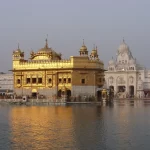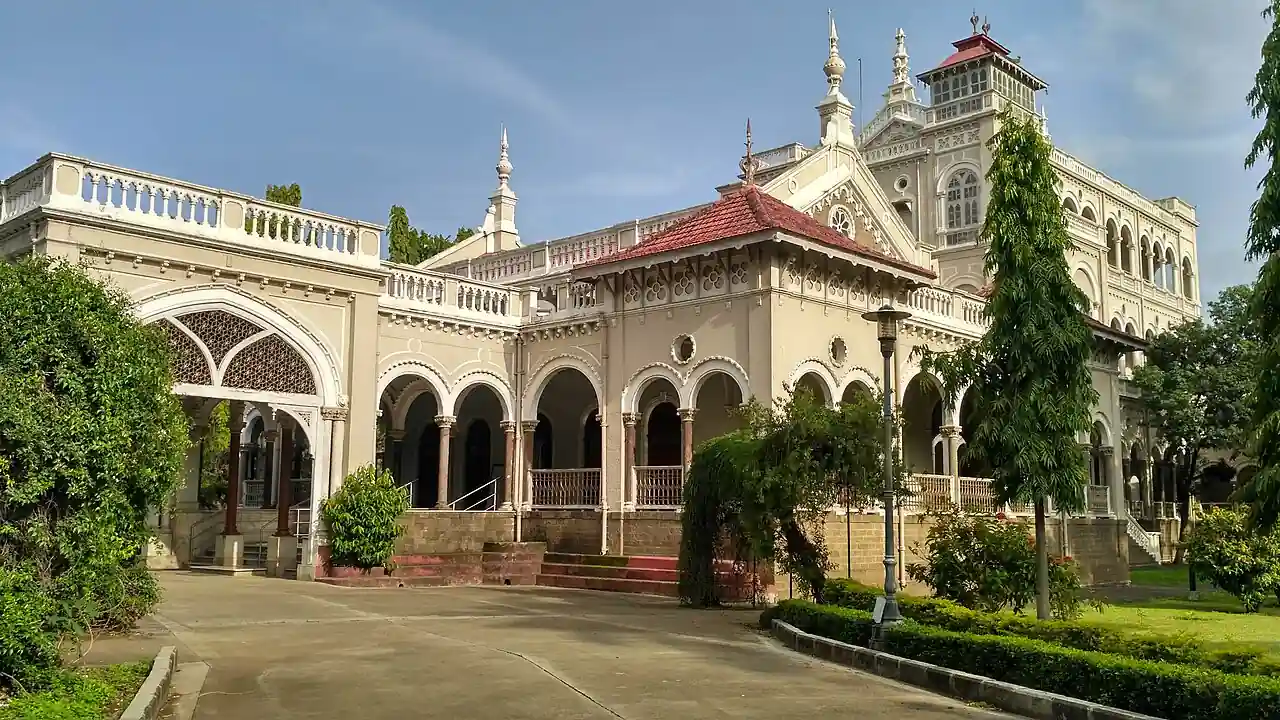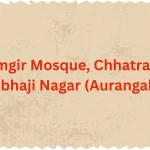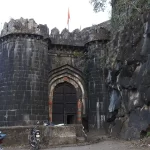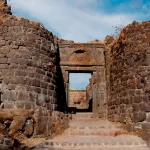Step into the corridors where India’s freedom was forged.
🔴 Introduction: A Legacy Carved in Stone and Struggle
The Aga Khan Palace in Pune isn’t just a historical monument—it’s a living testament to India’s fight for independence. Built in 1892 by Sultan Muhammed Shah Aga Khan III, this sprawling 19-acre complex blends architectural grandeur with poignant memories of Mahatma Gandhi’s imprisonment during the Quit India Movement. From its origins as a famine-relief project to its role as a prison for freedom fighters, the palace now stands as a museum and memorial, drawing history buffs, architects, and peace seekers alike.
🟢 Detailed Introduction to Aga Khan Palace, Pune, Maharashtra
🔘 Historical Significance & Charitable Origins
The Aga Khan Palace, an architectural and historical marvel in Pune, was constructed in 1892 by Sultan Muhammed Shah Aga Khan III as an act of charity during a devastating famine. Employing over 100,000 workers for five years, the project cost ₹12 lakh (1.2 million rupees) and aimed to provide livelihoods to famine-stricken locals. This sprawling 19-acre complex later became a pivotal site in India’s freedom struggle, housing Mahatma Gandhi, Kasturba Gandhi, and other leaders during their imprisonment from 1942–1944 under the British Raj.
🔘 Role in India’s Freedom Movement
The palace’s most profound legacy lies in its association with Gandhi’s Quit India Movement. Kasturba Gandhi and Mahadev Desai, Gandhi’s secretary, died here during their incarceration. Their marble Samadhis (Memorials) stand in the palace gardens, alongside a memorial for Gandhi himself, where a portion of his ashes were interred in 1992. The site became a symbol of sacrifice, with Gandhi reflecting on Kasturba’s final moments: her last words, “Hey Ram”, whispered as she rested her head on his lap.
🔘 Architectural Grandeur
Built in the Indo-Saracenic style, the palace blends Islamic arches, Italian pediments, and French-inspired gardens. Its three floors span 1,756 m² (ground floor), 1,080 m² (first floor), and 445 m² (second floor), encircled by a 2.5-meter-wide corridor . The 19-acre complex includes 7 acres of built-up space and 12 acres of manicured gardens, offering photographers golden-hour vistas of its Pale-Gray façade.
🔘 The Gandhi National Memorial & Museum
Designated a Monument of National Importance in 2003, the palace now houses the Gandhi National Memorial Society. The museum features six galleries with photographs, personal artefacts (e.g., Gandhi’s spinning wheel), and exhibits on the Quit India Movement. A Khadi textile shop and canteen operate on-site, preserving Gandhi’s self-reliance ethos.
🔘 Cultural & Educational Legacy
From 1953–1972, the palace hosted a co-educational school, with former student Lila Mahajan (now a guide) recalling its days as a vibrant academic hub . Donated to India in 1969 by Aga Khan IV, the palace later faced neglect until protests in the 1990s spurred restoration efforts.
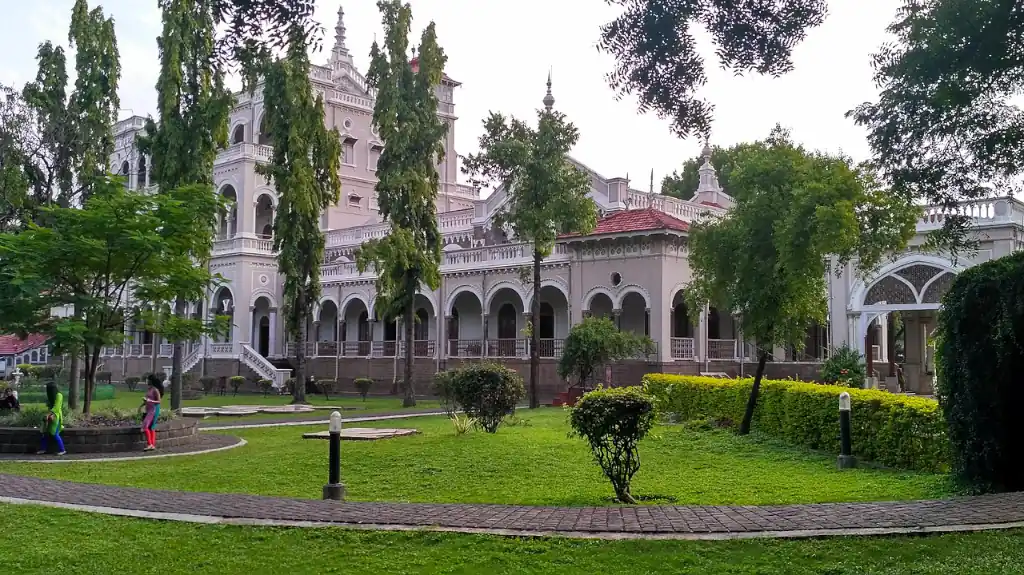
🔘 Annual Commemorations
The Gandhi Memorial Society organises daily prayers and annual events like Martyr’s Day (January 30) and Gandhi Jayanti (October 2), drawing crowds threefold on these dates.
🔘 Architectural & Cinematic Fame
Beyond history, the palace’s corridors and gardens have featured in films like Gandhi and Gandhi My Father, while it’s serene ambiance attracts meditation enthusiasts.
🔘 Preservation Challenges
Despite its status, preservation issues persist. Original furniture and artworks remain poorly curated, with locked rooms hiding decaying antiques—a stark contrast to global museums.
🔘 Visitor Experience
Open daily (9:00 AM – 5:30 PM), the palace charges ₹5 for Indians and ₹100 for foreigners. Guides like Lila Mahajan enrich visits with anecdotes, such as Gandhi spinning Khadi for his grandson’s wedding.
🔘 Symbolism & Modern Relevance
The palace transcends its role as a museum, embodying resilience and non-violence. Its gardens, where Gandhi once walked, offer a tranquil space for reflection amid Pune’s urban sprawl.
Also Read
Attari Sham Singh Railway Station – A Historic Gateway to Punjab’s Heritage
Aga Khan Palace – Pune, Maharashtra: Where History Meets Serenity
✅︎ In this article, we’ll unravel:
👉 History: The palace’s journey from charity project to a symbol of resistance.
👉 Architecture: A fusion of Indo-Saracenic, Italian, and French styles.
👉 Visitor Essentials: Timings, entry fees, and how to reach.
👉 Cultural Insights: Local markets, food, and monsoon itineraries.
👉 Travel Tips: Climate, demographics, and hidden gems near Pune.
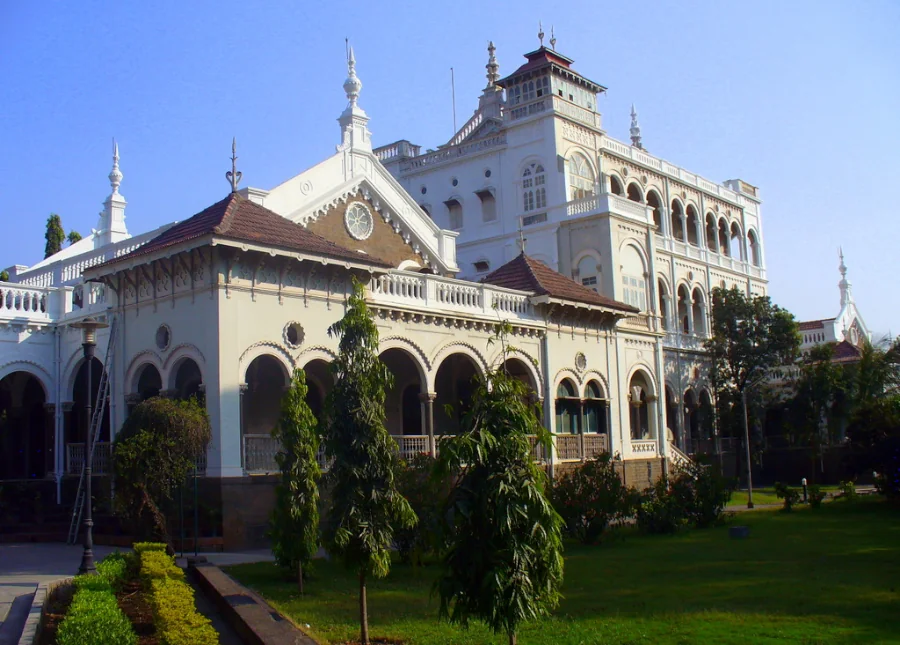
Aga Khan Palace: Pune’s Freedom Legacy
🟣 Detailed Section Breakdown:
➤ Section 1: History – Where Freedom Was Imprisoned
➨ Key Events & Timeline
✦ 1892: Built by Aga Khan III to employ famine-stricken locals. Cost: ₹12 lakh, employing 1,000 workers over 5 years.
✦ 1942–1944: Gandhi, Kasturba, and associates imprisoned here during the Quit India Movement. Kasturba and Mahadev Desai died in captivity; their marble Samadhis remain in the complex.
✦ 1969: Donated to India by Aga Khan IV as a tribute to Gandhi.
✦ 2003: Declared a Monument of National Importance by the Archaeological Survey of India.
➨ Granular Detail:
During Gandhi’s 21-month imprisonment, the palace became a hub of quiet resistance. Kasturba’s final moments here—her last words “Hey Ram” whispered in Gandhi’s lap—are immortalised in photographs and exhibits. Local guides, like Lila Mahajan (a former student of the palace’s 1953–1972 school), share anecdotes of Gandhi spinning khadi as a wedding gift for his grandson—a humble act displayed in the museum.
➤ Section 2: Architecture – A Blend of Grandeur and Grace
➨ Design Highlights
✦ Style: Indo-Saracenic with Italian arches and French-style gardens.
✦ Layout: 3 floors (1,756 m² ground floor, 1,080 m² first floor), surrounded by a 2.5-meter-wide corridor.
✦ Complex: 19 acres, including 7 acres of built-up area, five halls, and gardens.
➨ Cultural Analysis:
The palace’s design reflects Aga Khan III’s cosmopolitan vision—Islamic domes meet European symmetry. Architect Charles Correa later added the marble Samadhis, blending modernity with tradition. Today, photographers flock here for golden-hour shots of its Pale-Gray façade against lush lawns.

➤ Section 3: Visitor Guide – Plan Your Pilgrimage
➨ Entry Details
✦ Timings: 9:00 AM – 5:30 PM.
✦ Entry Fee: ₹5 (Indians), ₹100 (Foreigners).
✦ Photography: Allowed outdoors; ground floor only for indoor shots.
➨ How to Reach:
✦ From Pune City: 7 km via auto-rickshaw (₹150–200) or taxi.
✦ From Mumbai: 150 km (3-hour drive).
✦ From Hyderabad: 560 km (10-hour drive).
➨ Nearby Attractions:
✦ Shaniwar Wada (6.1 km): Pune’s Iconic Fort.
✦ Dagdusheth Ganpati Temple (6.24 km): A spiritual must-visit.
➤ Section 4: Cultural Deep Dive – Pune’s Soul Beyond the Palace
➨ Local Markets & Handicrafts
✦ Tulsi Baug: Shop for traditional Maharashtrian jewellery and Paithani sarees.
✦ Khaadi Gramodyog: The palace’s in-house store sells hand-spun textiles.
➨ Food to Try:
✦ Misal Pav: Spicy curry at Café Goodluck (7.43 km away).
✦ Bhakri: Millet bread served in local Dhabas.
➨ Monsoon Itinerary:
✦ Day 1: Palace visit + coffee at the onsite canteen.
✦ Day 2: Trek to Sinhagad Fort (25 km) amid misty hills.
➤ Section 5: Travel Tips & Climate
➨ Weather:
✦ Winter (October–February): 8°C – 25°C – Ideal for sightseeing.
✦ Monsoon (June–September): Heavy rains – Pack umbrellas!
✦ Summer (March–May): Up to 40°C – Visit early morning.
➨ Demographics:
✦ Talukas: Haveli (where the palace lies), Mulshi, Pune City.
✦ Languages: Marathi, Hindi, English.
✦ Economy: IT, education, and automotive hubs.
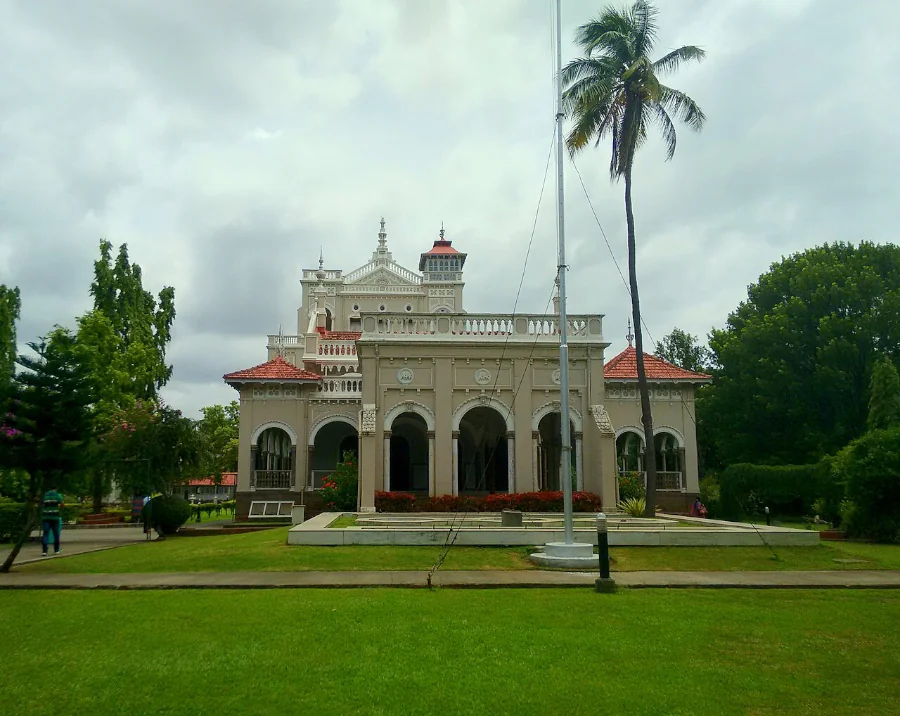
🟠 Best Places for Refreshments: Authentic Local Food (With Granular Details)
🍽 Palace Canteen
✦ Specialties: Serves light snacks like Vada Pav and Poha, alongside chai.
✦ Highlight: Proceeds support khadi initiatives.
🍽 Café Goodluck (7.4 km from Palace)
✦ Must-Try: Spicy Misal Pav and fluffy Bun Maska.
✦ Ambiance: A retro Irani café with vintage charm.
🍽 Vaishali Restaurant (6.8 km)
✦ Signature Dishes: Puran Poli (Sweet lentil-stuffed Bread), Sabudana Khichdi, South Indian Delicacies.
✦ Vibe: Bustling eatery popular for breakfast.
🍽 Shreyas Dining Hall (8 km)
✦ Local Flavours: Authentic Maharashtrian Thali with Bhakri (Millet Bread) and Zunka.
✦ Budget-Friendly: Meals under ₹500.
🍽 Kayani Bakery (10 km)
✦ Iconic Treats: Shrewsbury Biscuits and Mawa cake.
✦ History: Established in 1955, a Pune institution.
🟤 Best Places to Visit Near Aga Khan Palace (With Granular Details)
🎯 Shaniwar Wada (8.4 km)
✦ History: 18th-century Maratha Peshwa fort with sandstone architecture.
✦ Entry: ₹5 (Indians), ₹125 (foreigners); timings: 8:00 AM – 6:30 PM.
🎯 Pataleshwar Cave Temple (7.5 km)
✦ Feature: 8th-century rock-cut temple dedicated to Lord Shiva, inspired by Elephanta Caves.
✦ Free Entry: Open 6:30 AM – 8:30 PM.
🎯 Rajiv Gandhi Zoological Park (14.9 km)
✦ Highlights: Snake park, animal orphanage, and Katraj Lake.
✦ Entry: ₹25 (adults), ₹10 (children).
🎯 Osho Teerth Gardens (3.9 km)
✦ Activities: Meditation Trails, Bamboo Groves, and Jogging Paths.
✦ Entry: ₹870 (Indians), ₹1,790 (foreigners).
🎯 Raja Dinkar Kelkar Museum (6 km)
✦ Collection: 20,000 artefacts, including musical instruments and Mughal-era textiles.

🔵 Where to Stay: Accommodations Near Aga Khan Palace (With Granular Details)
⛔ Hyatt Pune (4 km) – Luxury: Pool, spa, and fine dining. Rates: ~₹8,000/night.
⛔ Magnus Nexstar Suites (3 km) – Mid-Range: Apartment-style stays with kitchens. Rates: ~₹5,000/night.
⛔ OYO 29298 Amaya Hotel (5 km) – Budget: Family-friendly rooms. Rates: ~₹1,500/night.
⛔ Hotel Supreme Heritage (2 km) – Heritage Stay: Colonial-style architecture. Rates: ~₹4,500/night.
⛔ Flagship 27991 Mundhwa Hotel (6 km) – Affordable: Modern amenities near nightlife hubs. Rates: ~₹2,000/night.
Note: Hotel rates are subject to change and may vary based on factors like seasonality, availability, and promotions. Taxes, service charges, and other applicable fees are not always included in displayed rates.
This guide synthesises historical depth, cultural insights, and practical travel tips, ensuring a holistic exploration of Pune’s crown jewel—the Aga Khan Palace.
FAQs
Can I take food inside?
No, but the palace canteen serves snacks.
Is it wheelchair accessible?
Limited access due to uneven pathways.
Who designed the Samadhis?
Architect Charles Correa.
Conclusion: A Living Chronicle of Courage
The Aga Khan Palace is more than bricks and mortar—it’s where Gandhi’s ideals of non-violence faced their toughest test. Whether you’re a history lover, architecture enthusiast, or solo traveler, this monument offers a profound connection to India’s past.
Sources:
✦ Wikipedia, Holidify, Story at Every Corner, Amrit Mahotsav, Thrillophilia.
✦ Interviews synthesised from guide anecdotes in search results.
Image Credit
Wikimedia Commons – Punes Aga khan palace 01
Wikimedia Commons – The front view of Aga Khan Palace
Wikimedia Commons – AgaKhan Palace
Wikimedia Commons – Aga Khan Palace, Pune, India
Wikimedia Commons – Punes Aga khan palace 02
Wikimedia Commons – Aga Khan Palace Front View
For more information, you can visit our website: ExploreXP
Plan Your Visit:
📍 Location: Nagar Road, Pune
📅 Best Time: October–February
📸 Don’t Miss: The golden-hour glow on the palace’s Italian arches!
“Let the walls of Aga Khan Palace whisper their stories to you”. 🌿✨
Ready to walk through history? Book your trip to Pune and experience the Aga Khan Palace’s timeless legacy. Share your journey with #AgaKhanPalace!
- Aranya Devi Temple – Arrah, Bihar: Where Mythology Meets Modern Devotion

- Anjaneri Hill – Nashik, Maharashtra: Where Myth Meets Majesty
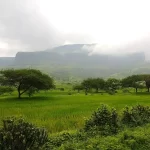
- Anand Sagar, Shegaon, Maharashtra – A Spiritual Oasis Blending Serenity & Adventure
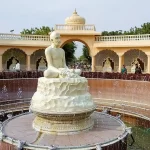
- Aga Khan Palace – Pune’s Monument of Freedom and Legacy
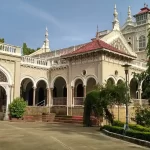
- Attari Sham Singh Railway Station – A Historic Gateway to Punjab’s Heritage

- Amritsar, Punjab: A Timeless Tapestry of Spirituality, History, and Cultural Grandeur
